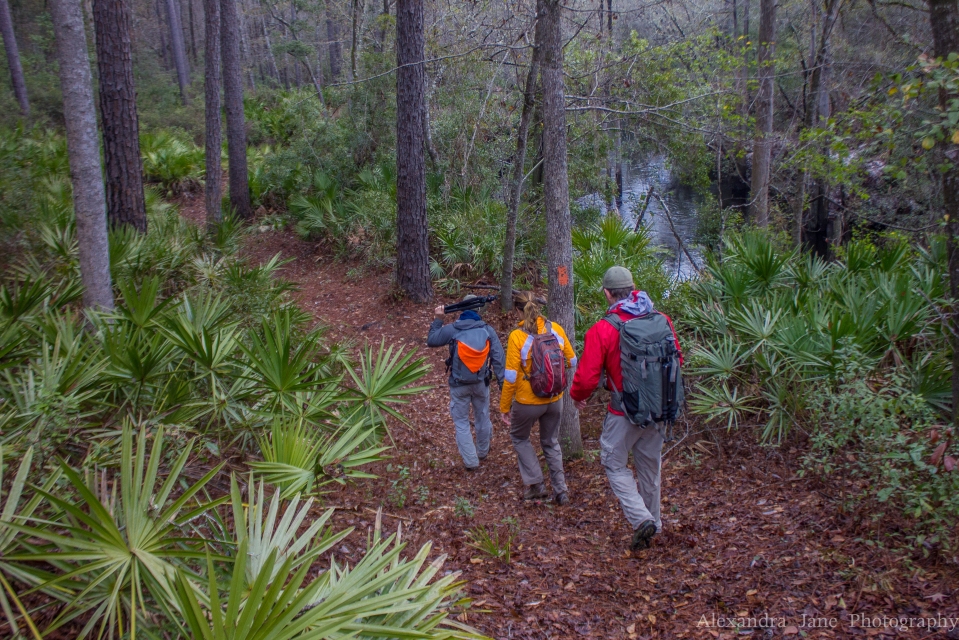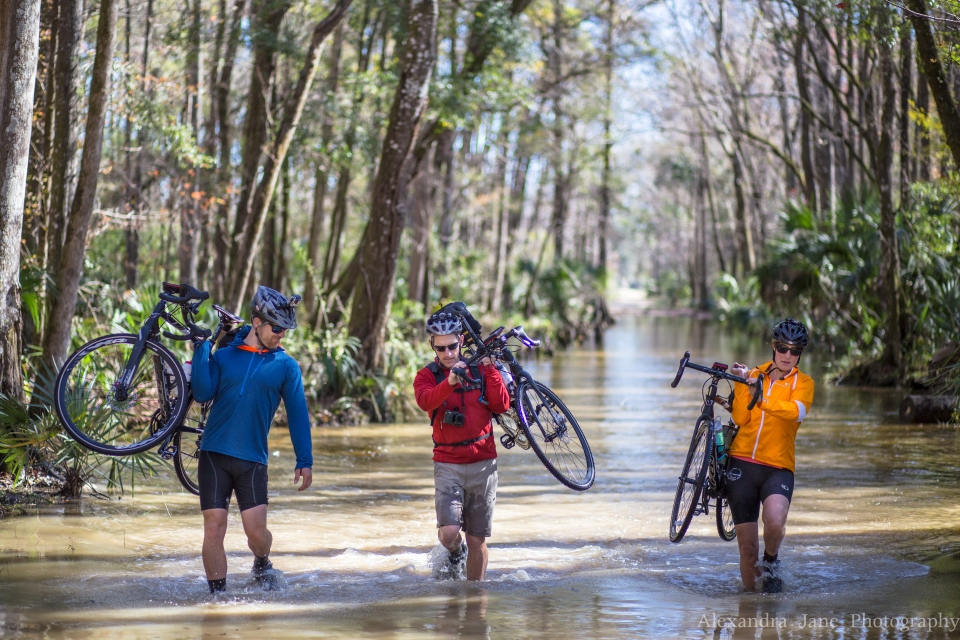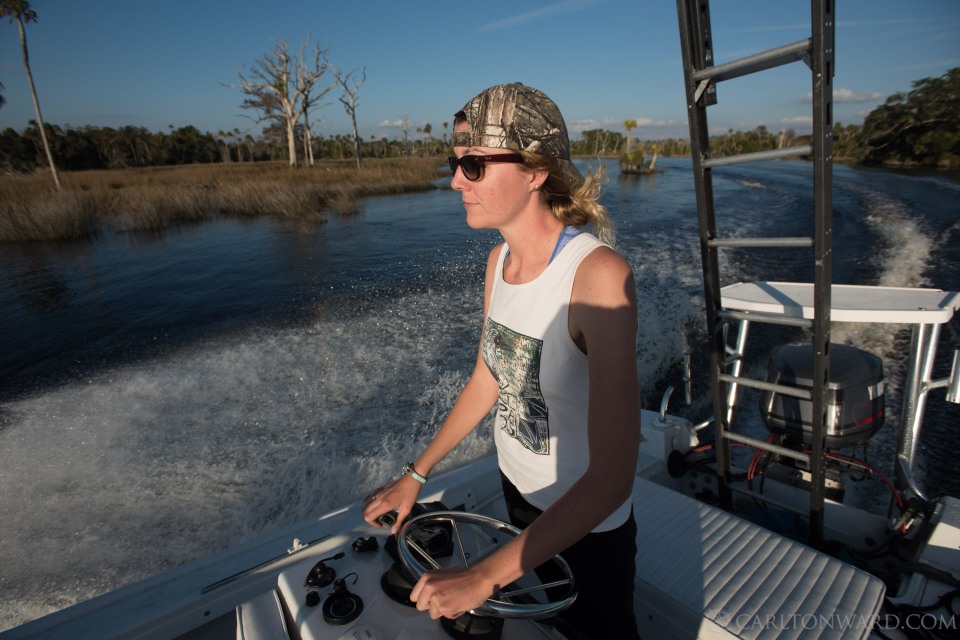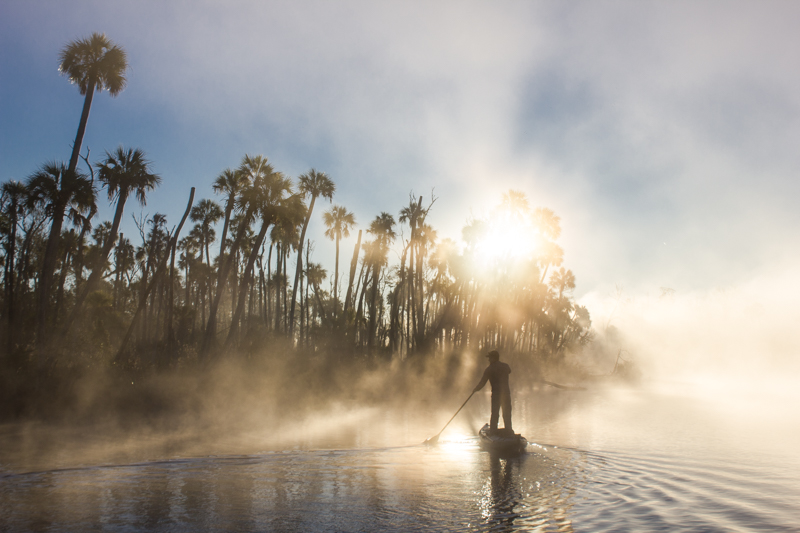A passion for wild places can, like Florida waters, carry us to places we’d never imagined possible. A little more than two years ago, The Florida Aquarium hosted members of the Florida Wildlife Corridor Expedition as they prepared for their second 1,000-mile journey across the state.

Among those attending The Aquarium’s festivities was a 22-year-old recent college graduate who found herself about to embark on the adventure of a lifetime. Tampa native Alex Morrison, a recent North Carolina State graduate, had intended to start graduate studies in science and environmental education in early 2015. But an invitation to become part of the expedition’s support team abruptly changed her plans. “It was an incredible opportunity,” said Alex in a recent interview, “but very intimidating. … they are all such amazing people.”
Indeed, the primary team members — photographer Carlton Ward, conservationist Mallory Lykes Dimmitt, and bear biologist Joe Guthrie — had seized on a brilliant and daring strategy to illustrate the importance of “wildlife corridors,” connected stretches of wilderness whose preservation would allow the state to retain its natural heritage even in the face of crushing growth.
 Previously, in 2012, they hiked, paddled, biked and rode horses through marshes, woodlands and waterways from the Everglades to the Okefenokee Swamp, 1,000 miles in 100 days. The journey produced a wonderful film and spectacular book of Ward’s photographs. The venture, along with compelling public presentations by the charismatic trio, generated enormous public support for their campaign.
Previously, in 2012, they hiked, paddled, biked and rode horses through marshes, woodlands and waterways from the Everglades to the Okefenokee Swamp, 1,000 miles in 100 days. The journey produced a wonderful film and spectacular book of Ward’s photographs. The venture, along with compelling public presentations by the charismatic trio, generated enormous public support for their campaign.
Unfortunately, the public proved far more enlightened than lawmakers, who have continually gutted land preservation funding in recent years. Though voters overwhelmingly passed the 2014 Amendment One mandating that conservation funding be restored to historic levels, the Legislature refused to follow citizens’ directive, claiming money used on salaries and such diversions qualified as conservation spending. The need to protect the state’s imperiled corridors remains acute.
In 2015, Dimmitt, Ward and Guthrie undertook another trip. This time they would travel 1,000 miles in 70 days, from the Everglades Headwaters in Central Florida to the Alabama border. Once again, they would hike, bike and kayak through woodlands and swamps.
 Alex, a photography enthusiast, had served as an intern for Ward that fall, earning the respect of the internationally renowned photographer, whose work regularly appears in National Geographic, Audubon, Smithsonian and many other magazines. She was invited to help with the trek’s logistics, heady stuff for the Plant High School graduate.
Alex, a photography enthusiast, had served as an intern for Ward that fall, earning the respect of the internationally renowned photographer, whose work regularly appears in National Geographic, Audubon, Smithsonian and many other magazines. She was invited to help with the trek’s logistics, heady stuff for the Plant High School graduate.
But if Morrison was awed by the environmental credentials of the team leaders, she was not intimidated by the outdoors. The seventh-generation Floridian had been “immersed in the wilds” since she was “in diapers.” Her father, Tampa dentist Howell Morrison, is a skilled outdoorsman and her mother, Donna Morrison, is an accomplished nature artist. Alex learned early to appreciate natural Florida and found it “tragic” to see so much of the state being bulldozed away.
But handling the logistics was no walk in the woods. She had to deal with numerous details, big and small, required to keep the 1,000-mile trip on schedule. Those might include pitching in on meals or making sure essential permits were on hand.
She was by far the youngest person on the trip that included the three leaders and a five-person film crew. But her colleagues never failed to convey their confidence and respect. “No one could be more supportive, more encouraging to an aspiring young scientist,” she said. Mallory Lykes Dimmitt, the leader of the expedition, was a particular inspiration for a young woman intent on a career devoted to the environment.
Assorted other individuals would join for sections of the trip. The Corridor team also had the wonderful idea of holding the occasional “Trail Mixer,” where the public could join briefly join the journey on selected weekends. (On a frigid day in January, my wife and I were among 80 people who canoed with the team a section of the crystal-clear, lavishly wooded Rainbow River, where a memorable sight was Ward standing in a canoe, taking pictures from all sorts of awkward angles without ever losing balance.)

Florida Wildlife Corridor Expedition: Everglades Headwaters to Gulf Islands #Glades2Gulf Expedition Day 13 – Crystal River to Yankeetown 19.4 mile paddle Alex Morrison This mission of the Florida Wildlife Corridor is to protect a functional ecological corridor throughout Florida for the health of people, wildlife and watersheds. Learn more at FloridaWildlifeCorridor.org. Photo by Carlton Ward Jr / CarltonWard.com As Florida’s human population has expanded, conservation lands have become increasingly isolated from one another, causing problems for numerous species of wildlife. The Florida Wildlife Corridor Expedition shows that a statewide wildlife corridor is still possible and important for the future of people and wildlife. The Florida Wildlife Corridor Expedition team includes executive director Mallory Lykes Dimmitt, conservation photographer and project founder Carlton Ward Jr. and biologist Joe Guthrie whose Central Florida black bear research was the inspiration for the campaign. Beginning January 10, 2015, the team embarked on 925-mile trek to highlight a wildlife corridor from Central Florida to the Gulf Coast, through the Big Bend, and across the Panhandle all the way to Alabama. The original Florida Wildlife Corridor Expedition was a 1000-mile trek through peninsular Florida, from the Everglades on South Florida to the Okefenokee Swamp in southern Georgia.
One of Morrison’s tasks was trailering and operating Ward’s center-console Mako boat, used for transporting supplies and film equipment. She quickly learned how to maneuver the boat trailer down a ramp by herself, and pilot the boat through winding rivers and across rocky shoals. But she never quite got over the fear of a mishap that might damage Ward’s boat and expensive photography equipment. (The expedition eventually produced another beautiful book, “The Forgotten Coast: Florida Wildlife Corridor Glades to Gulf Expedition,” and an equally memorable film.)
At night, Alex would help the team transmit photographs and stories. They used solar-powered computers at campsites, though she said they were able to arrange the trip so they could spend nearly half the time under shelter. After a day of sloshing through icy water, any modest comfort was welcomed.
Alex said her most challenging day of the trip was taking the boat trip up the Apalachicola River when the temperatures had dropped into the teens. “The team members were in kayaks and at least they could get their body temperature up by paddling,” she said. “But driving the boat in that frigid air, there was no way to warm up. I had on seven top layers and four bottom layers and I was still freezing.”
Yet that night, sitting around the fire at their sandbar camp remains a favorite memory, though she was happy that “Joe Guthrie is a wizard at starting a fire.”
 Another enduring vision is the stunning beauty of the Chassahowitza River. “It is hardly two hours from Tampa and it’s like a totally new universe,” she said. “Getting to see that place, watching the sun rise and the mist over the water and the sabal palms along the shore, it was incredible.” So was seeing 400 to 500 manatees cope with freezing temperatures by gathering in the warm spring water of Crystal River. “That the real Florida, that’s what people should be celebrating.”
Another enduring vision is the stunning beauty of the Chassahowitza River. “It is hardly two hours from Tampa and it’s like a totally new universe,” she said. “Getting to see that place, watching the sun rise and the mist over the water and the sabal palms along the shore, it was incredible.” So was seeing 400 to 500 manatees cope with freezing temperatures by gathering in the warm spring water of Crystal River. “That the real Florida, that’s what people should be celebrating.”
That is why she is so passionate about the Corridor and so frustrated by politicians’ inaction. “We could protect pretty much the entire Florida Wildlife Corridor” if lawmakers would simply fund conservation as voters sought with Amendment One, she said.
But Alex, like the Corridor team, refuses to be discouraged. The expedition aimed to open, as she puts it, a “window into wild Florida.” Anyone who bothers to look through it should recognize what marvels are at stake.![]()

Joe, you haven’t lost your touch … I look forward to reading everything you write in this space.
hutch
LikeLike
Thank you for this great story and for your support for the Florida Wildlife Corridor and it’s protection. It surprises me every day how little many residents of Florida know about the need to preserve wild Florida and how badly it is threatened. Keep up the great work!
LikeLike